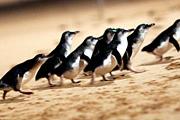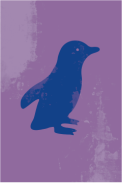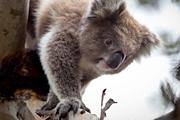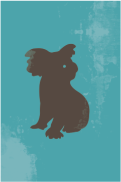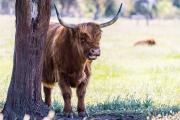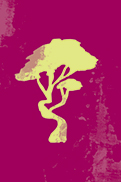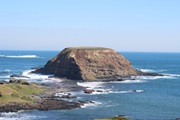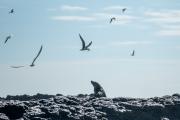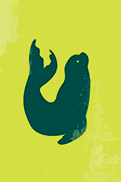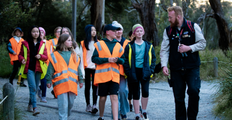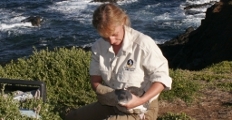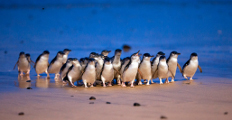Landmark study to reintroduce bush stone-curlew to Phillip Island
A dozen bush stone-curlews from Mt Rothwell Sanctuary will be reintroduced to Phillip Island (Millowl) in August, with hopes the new program will cast a lifeline to the critically endangered species. Phillip Island Nature Parks is collaborating with the Odonata Foundation and The Australian National University (ANU) in a landmark study to improve the long-term viability of the bush stone-curlew in south-eastern Australia. Dr Duncan Sutherland, Senior Scientist at Phillip Island Nature Parks, is leading the project, which begins with a pilot study involving 12 birds released – a few at a time – on Phillip Island next month. Researchers will monitor the birds using GPS trackers and individual identification bands to assess their survival, habitat use, movement patterns and reproductive success. Field health checks, acoustic recording, remote cameras, and observations by citizen scientists will also aid the research. If the trial is successful, up to 60 birds may be released over the next three years in a bid to establish a self-sustaining population on Phillip Island. Former Senior Research Officer at Phillip Island Nature Parks, Paula Wasiak, has started a PhD project with the ANU’s Fenner School of Environment and Society in Canberra and will monitor and evaluate the reintroduction and the strategies that drive success. The bush stone-curlew is a ground-dwelling, nocturnal bird with long legs, known for its resounding call. Phillip Island once supported a wild population of bush stone-curlews however there have been no records of them since the 1970s.
Phillip Island Nature Parks General Manager Conservation Jessica McKelson said Phillip Island presents a rare opportunity for reintroduction of the species in a protected environment that is now fox-free. “Bush stone-curlews are part of the natural biodiversity of Phillip Island and this program is a significant milestone in our efforts towards a sustainable population of the birds,” Ms McKelson said. “As conservationists, we are excited to play a part in what we hope will lead to the long-term recovery of the bush stone-curlew in Victoria.” Dr Sutherland said: “Reintroducing the bush stone-curlew is one step towards their long-term recovery and our efforts to move this species off the ‘critically endangered’ list. If successful, the reintroduction will demonstrate how we can work together to recover species from extinction and return them to their natural ecological roles. “It will take time to establish a population of bush stone-curlews and we do expect challenges and setbacks along the way.” Ms McKelson said community support would be crucial to the success of the program. “Importantly, we will need the help of the community to give us the best chance of success and are developing ways for the community to be involved in this project and be part of their recovery.” A wildlife permit has been issued by the Department of Energy, Environment and Climate Action, approving the translocation, release, and monitoring.





